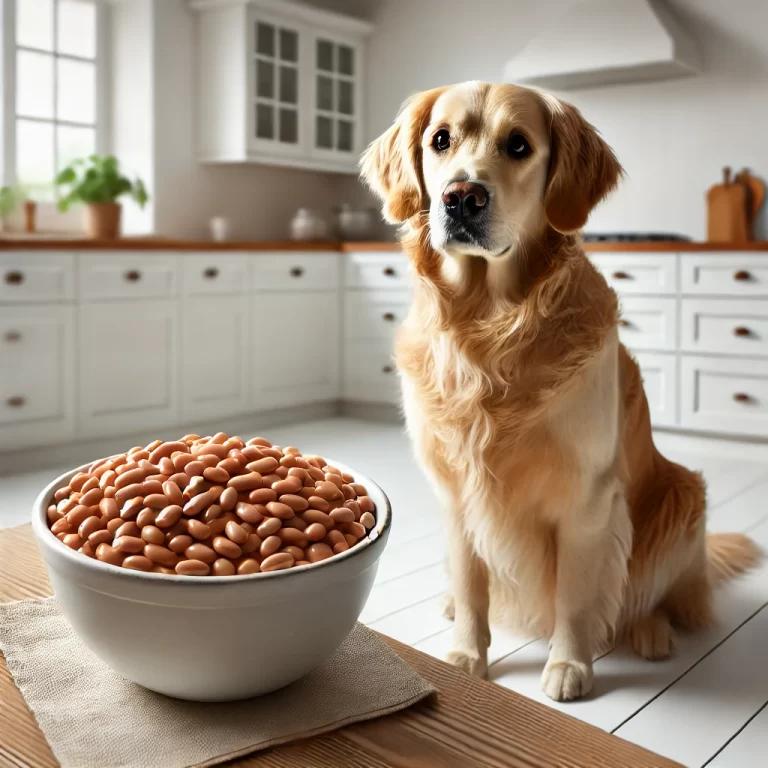Why Is My Dog Throwing Up White Foam?
Seeing your dog vomit white foam can be alarming, and as a responsible pet owner, you likely want to know the cause and what you should do next. In many cases, white foam vomit is harmless, but it can also indicate underlying health issues. This article will explore the possible reasons behind this symptom, when to seek veterinary care, and how to prevent it from happening in the future.
Common Causes of White Foam Vomit in Dogs
1. Indigestion or an Empty Stomach
When a dog’s stomach is empty for too long, it can produce white foam due to the buildup of gastric acid and saliva. This is common in dogs that go long periods between meals or those that have irregular feeding schedules.
What You Can Do
- Try feeding your dog smaller, more frequent meals.
- Ensure they have a balanced diet to prevent excessive acid buildup.
2. Eating or Drinking Too Fast
Dogs that eat or drink too quickly can ingest excess air, leading to stomach irritation and foamy vomit.
What You Can Do
- Use a slow-feeder bowl.
- Provide water gradually after exercise.
- Avoid letting your dog eat too quickly.
3. Gastrointestinal Upset (Gastritis)
Your dog may have eaten something they shouldn’t have, such as spoiled food, foreign objects, or toxic substances. This can irritate the stomach lining and lead to vomiting.
What You Can Do
- Monitor your dog for additional symptoms like diarrhea, lethargy, or loss of appetite.
- Keep toxic substances and non-food items out of reach.
- If vomiting persists, consult a vet.
4. Bloat (Gastric Dilatation-Volvulus, GDV)
Bloat is a life-threatening condition in which the stomach fills with gas and twists. White foam vomiting, restlessness, distended abdomen, and difficulty breathing are signs of GDV.
What You Can Do
- Seek emergency veterinary care immediately.
- Prevent bloat by feeding your dog smaller meals and avoiding intense exercise after eating.
5. Kennel Cough (Canine Infectious Tracheobronchitis)
Kennel cough is a contagious respiratory disease that can cause a dry, hacking cough, often leading to white foam vomiting due to throat irritation.
What You Can Do
- Isolate your dog from other pets if they exhibit symptoms.
- Visit the vet for possible antibiotics or cough suppressants.
- Ensure vaccinations are up to date to prevent kennel cough.
6. Acid Reflux (Gastroesophageal Reflux Disease – GERD)
Dogs can suffer from acid reflux, leading to stomach acid entering the esophagus and causing irritation, which results in foamy vomit.
What You Can Do
- Provide a low-fat, easily digestible diet.
- Avoid feeding your dog before bedtime.
- Consult a vet for acid reflux medication if needed.
7. Pancreatitis
Inflammation of the pancreas can cause white foam vomiting, along with other symptoms like abdominal pain, fever, and diarrhea. High-fat diets are a major trigger.
What You Can Do
- Feed a low-fat diet and avoid giving table scraps.
- Seek veterinary attention if your dog has additional symptoms.
8. Parvovirus (Especially in Puppies)
Parvovirus is a severe viral infection that causes vomiting, diarrhea, and lethargy. White foam vomiting can be an early sign.
What You Can Do
- Seek emergency veterinary care immediately.
- Ensure your puppy is up to date on vaccinations.
9. Toxin Ingestion
Dogs that ingest poisonous substances (household cleaners, human medications, toxic plants, etc.) may vomit white foam as their body tries to expel the toxins.
What You Can Do
- Call a vet or poison control center immediately.
- Identify the toxin if possible.
- Prevent access to hazardous substances.
10. Heartworm Disease
Heartworm disease can cause respiratory issues, leading to coughing, gagging, and vomiting white foam.
What You Can Do
- Keep your dog on a regular heartworm prevention plan.
- See a vet for testing and treatment if heartworm is suspected.
When to See a Vet
While occasional vomiting may not be serious, seek veterinary care if your dog:
- Vomits white foam repeatedly.
- Shows signs of lethargy, weakness, or disorientation.
- Has a distended abdomen or difficulty breathing.
- Exhibits diarrhea, fever, or signs of pain.
- Has a known history of eating toxic substances.
Prevention Tips
To minimize the risk of your dog vomiting white foam:
- Maintain a Regular Feeding Schedule – Avoid long gaps between meals.
- Provide Fresh Water – Ensure your dog has access to clean water at all times.
- Use Slow-Feeder Bowls – Reduce the risk of eating too fast.
- Monitor for Dietary Indiscretions – Prevent them from eating inappropriate items.
- Stay Up to Date on Vaccinations – Protect against parvovirus and kennel cough.
- Practice Good Parasite Prevention – Use heartworm and flea preventatives.
- Limit Exercise Right After Meals – Reduce the risk of bloating.
- Visit the Vet Regularly – Routine check-ups help catch potential health issues early.
Final Thoughts
White foam vomiting in dogs can stem from minor issues like an empty stomach to serious conditions such as bloat or toxin ingestion. By recognizing the potential causes and knowing when to seek veterinary care, you can ensure your furry friend stays healthy and happy. If your dog continues vomiting white foam or shows other concerning symptoms, don’t hesitate to consult a veterinarian. Early intervention can make all the difference in your pet’s well-being.







